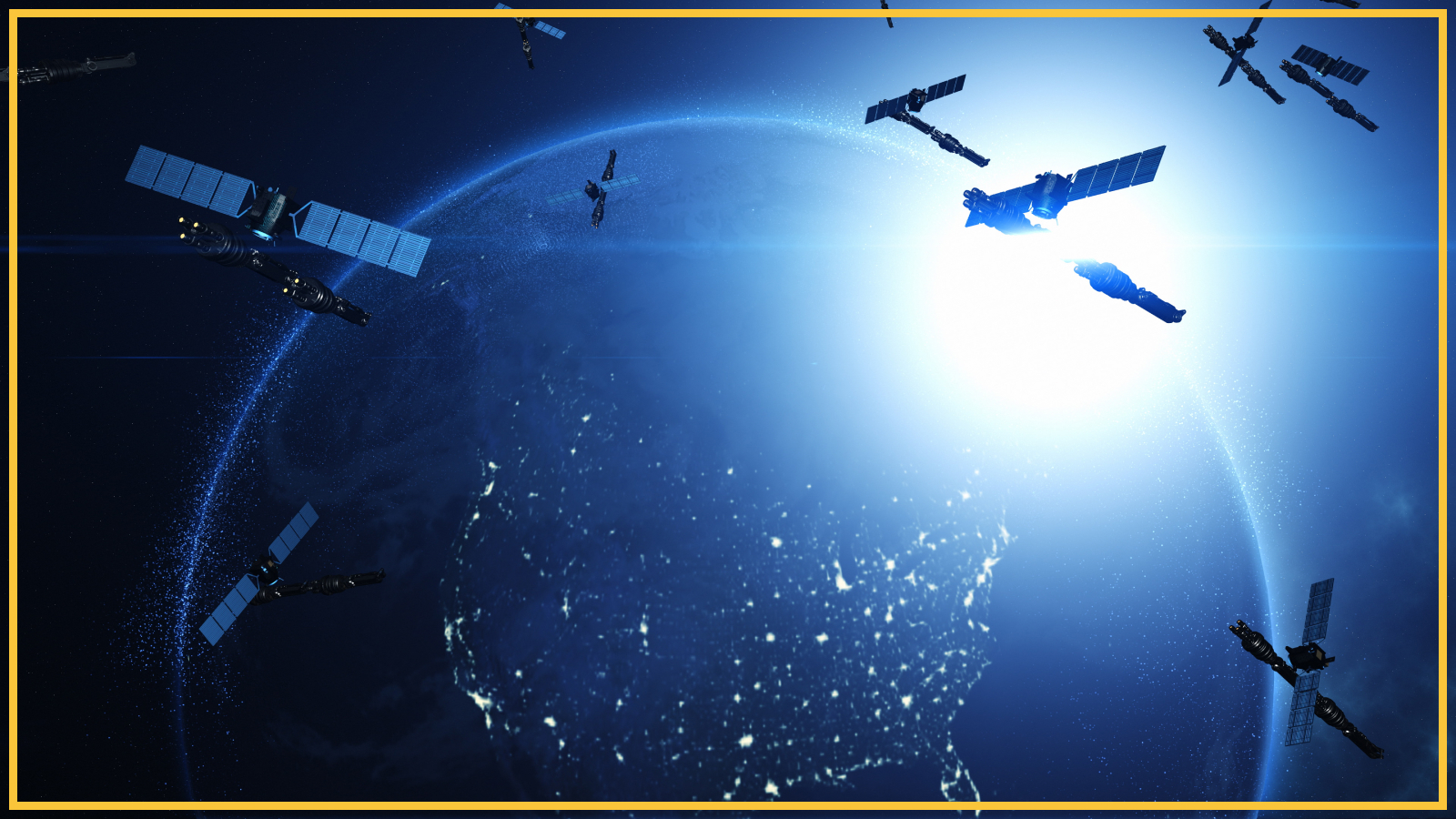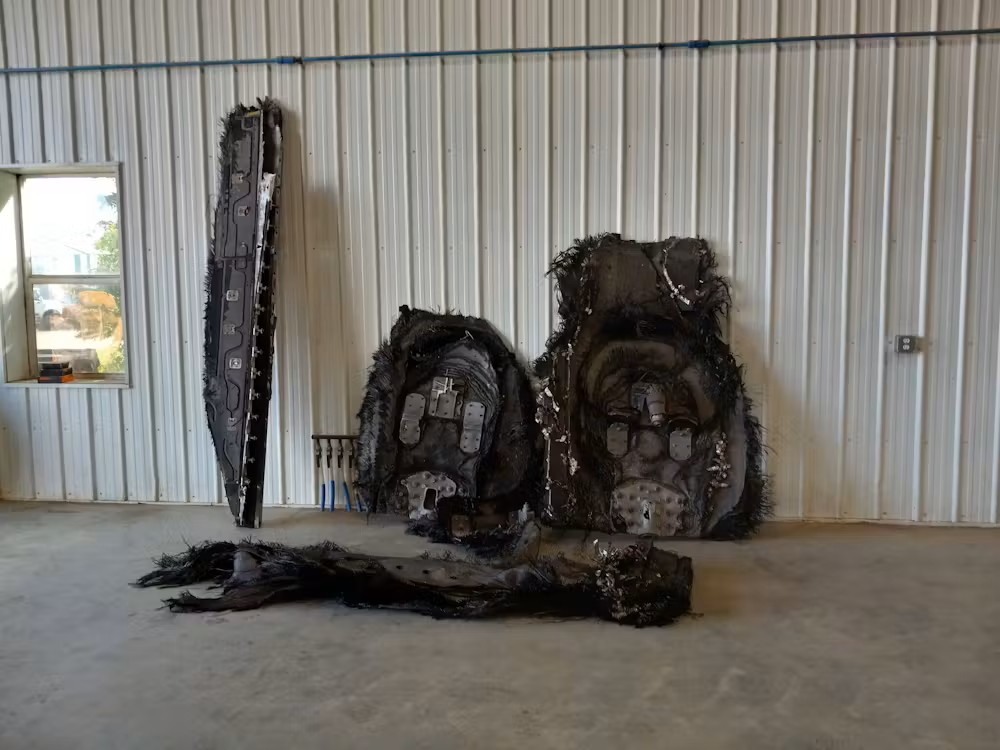What goes up must come down: How megaconstellations like SpaceX's Starlink network pose a grave safety threat to us on Earth
Thousands of satellites with incredibly short lifetimes are being sent up into low Earth orbit. When they fall back down they're fireballs of pollution — and what doesn't burn up hits the ground.

In 2024, several farmers across Saskatchewan, Canada, had to deal with a bizarre situation: chunks of SpaceX space junk had crashed onto their land. As I helped a couple of these farmers negotiate the wild world of international space law, not significantly updated since the Apollo era, I knew this situation would become increasingly common.
The first generation of megaconstellation satellites, led by the SpaceX Starlink initial launch of 60 satellites in 2019, have now reached the end of their incredibly short operating lifetimes.

The end-of-life plan for virtually every satellite in Low Earth Orbit (LEO) is to burn them up in Earth's atmosphere. Economically, this makes sense: it takes a lot less propellant to bring a satellite down into a lower orbit than up into a higher orbit, sometimes called a "graveyard" orbit.
But the economic argument for bringing these satellites back down to Earth ignores the very real environmental consequences of atmospheric disposal. The chassis, leftover propellant, electronics, antennas, and solar panels don't disappear when a satellite "burns up" — the mass of the metals and plastics that comprise the satellite is deposited in the atmosphere as metal vapor.
When just a few satellites are burned every year, it's not a significant change to atmospheric chemistry. But Starlink alone plans to have 42,000 satellites with 5-year operating lifetimes, so the mass of metal vapor entering the atmosphere (particularly highly reactive aluminum and lithium) will exceed natural infall rates by 25 times or more.
This much extra metal vapor in the stratosphere can change atmospheric chemistry and may cause ozone depletion. By 2023, 10% of stratospheric aerosols already included metals from rocket and satellite reentries.

LEO satellites burning up are a source of upper atmospheric pollution that's going to increase exponentially — and scientists are only just beginning to study what this massive increase in metal vapor could do in the stratosphere.
Get the world’s most fascinating discoveries delivered straight to your inbox.
Whatever parts of the reentering satellites don’t burn up will hit the ground. Just in the past few months, spacecraft pieces have fallen on Poland, Kenya, North Carolina, and Algeria, while scientists carefully tracked a 1970s Soviet Venus probe's reentry and speculated about ground casualty risks. That spacecraft, Kosmos 482, crashed into the Indian Ocean earlier this month.
While identifiable debris from only one Starlink satellite has so far been recovered, there are likely many, many more pieces already on the ground in other places that are covered by woods or mountains.
At some point, a bit of falling space junk will kill someone. Scientists recently calculated the risk of a casualty from one of the over 2,000 rocket bodies in orbit is 10% in the next decade, but that doesn’t include the tens of thousands of satellites expected to reenter in that same time period.
So what's the solution?
Leaving unmaneuverable, dead satellites in orbit is not an option. They pose a safety risk to other satellites, potentially orbiting for decades at 16,000 mph (25,000 km/h).
Collisions at these speeds are catastrophic, producing debris bullets that can crash into other satellites, producing more debris. The worst-case scenario is called Kessler Syndrome, where these collisions become self-propagating, and the debris field makes LEO unusable for decades to centuries.

Starlink has the highest density of operational satellites that has ever existed in orbit. It has reported an average of one collision avoidance maneuver within their megaconstellation every two minutes in the second half of 2024, and they have already launched hundreds more satellites into that orbital shell since then.
So far, Starlink has been impressively successful at avoiding collisions. But the frequency of collision avoidance maneuvers means that if there is a large solar flare, or their systems get hacked, or there's a simple human error, no maneuvers can be executed for any significant window of time — raising the risk of a collision.
Having fewer satellites in orbit naturally reduces the danger of collisions and the worst-case scenario of Kessler Syndrome. It also reduces light pollution from satellites, which is the reason I originally started worrying about megaconstellations. Satellites are already degrading astronomy research, including the discovery of potentially hazardous asteroids. Fewer satellites will allow astronomers to continue exploring space with telescopes, and stargazers to continue exploring space with their eyes.
LEO is a valuable resource that must be protected and shared in a way that benefits the most people while simultaneously protecting LEO for use by future generations. We cannot have tens of thousands of satellites in LEO without severe consequences for the atmosphere and an increasingly high likelihood of Kessler Syndrome, which will limit our use of satellites for decades to centuries.
This is the urgent challenge that satellite engineers and operators must now meet: if they need to provide services from orbit with fewer, longer-lived satellites, how will they do that? Without far-reaching, international regulation, or self-imposed limits from satellite companies, current practices in LEO threaten the planet, and our ability to explore beyond it.
Opinion on Live Science gives you insight on the most important issues in science that affect you and the world around you today, written by experts and leading scientists in their field.

Samantha Lawler is a professor of astronomy at the University of Regina in Saskatchewan, Canada. She completed degrees at the California Institute of Technology, Wesleyan University, and the University of British Columbia, followed by postdoctoral fellowships at the University of Victoria and NRC-Herzberg Astronomy and Astrophysics Research Centre. She studies the orbits of Kuiper Belt objects as well as light pollution from satellites. She has been advocating for regulation of satellites as her research telescope data and her dark prairie skies have increasingly filled with bright satellites over the past several years, and she recently helped to publicize two SpaceX debris falls that occurred in Saskatchewan.
You must confirm your public display name before commenting
Please logout and then login again, you will then be prompted to enter your display name.
